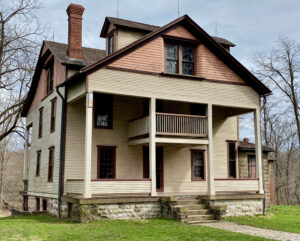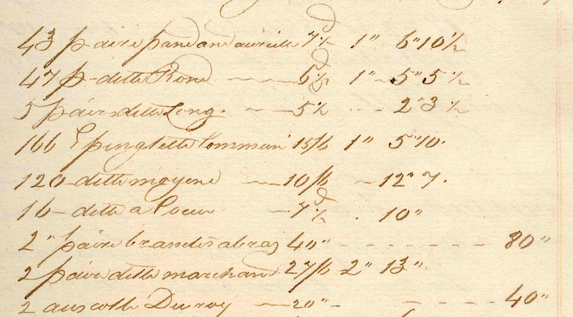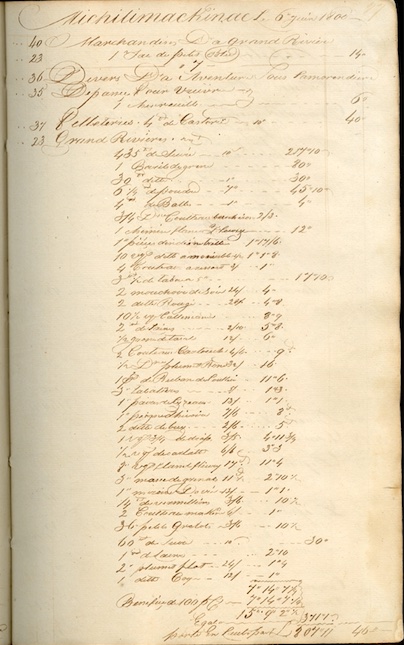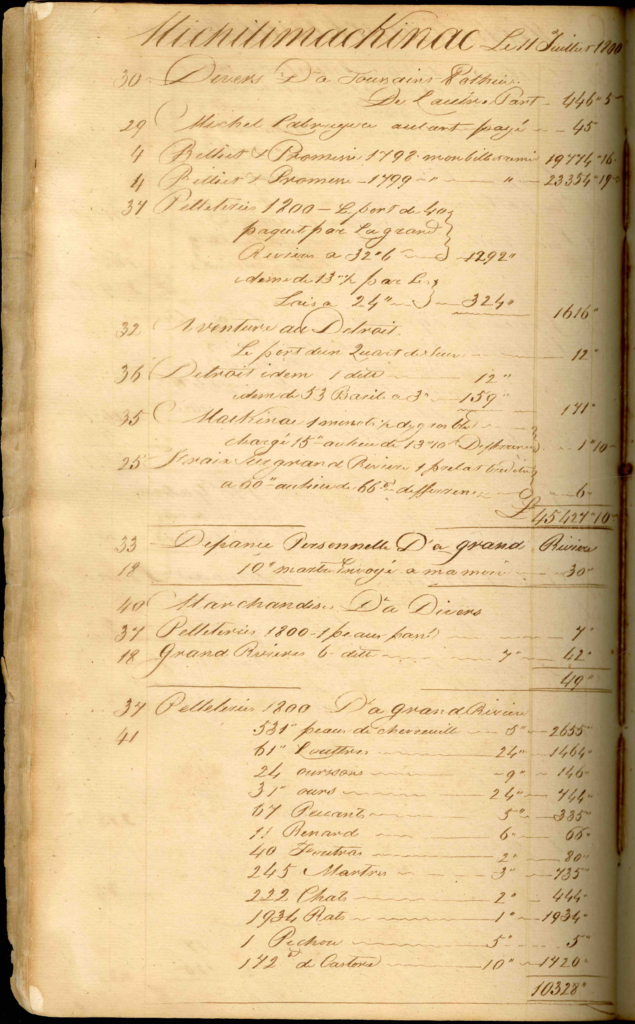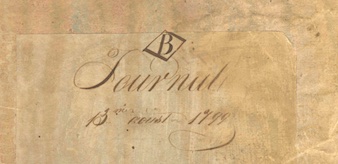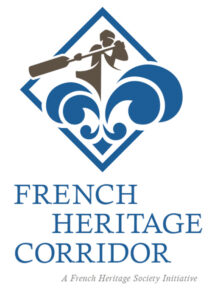
A Trader’s Accounts
We can consult documents written by fur traders in order to get to know something about their life. Here, we’ll take a look at a few pages from one of the account books of a Quebec fur trader named Joseph Bailly (1774-1835). Bailly was born near Montreal and worked principally in the area that is at present Michigan, Indiana, and Illinois. You can visit his home in the area called the Bailly Homestead at the Indiana Dunes National Park on Lake Michigan to see where he traded and lived for the last decades of his life.
Bailly traded with the Native people himself and also hired men to trade for him: these employees were the voyageurs who spent the winter at small trading posts that Bailly maintained in Michigan, Indiana, or Illinois, exchanging manufactured goods for furs.
In his account books—all of which are in French—Bailly recorded the goods that he purchased, the goods that he sold, and the furs or skins he received from his Native trading partners. He also listed his employees and the wages paid to them, though we have not reproduced that information here.
Here are excerpts from some of the lists of merchandise and furs that are recorded in one of Bailly’s account books dating from 1800.
First of all, we see two partial lists of merchandise that Bailly and his men traded with the Native people for furs, first in French and then translated into English. Note that Bailly’s spelling in French sometimes differs from the modern French spelling.
| 6 juin 1800 | 6 June 1800 |
| 6 ¼ lb de poudre | 6 ¼ lb of (gun)powder |
| 4 lb de balles | 4 lb of gunballs (shot) |
| ¾ Dn Coutteaux boucheron | ¾ Dozen butcher knives |
| 1 chemise flanel Fleurye | 1 shirt of flowered flannel |
| 1 piece dindiene trette | 1 piece of trade indienne cloth |
| 4 Coutteau a ressort | 4 spring knife |
| 3 lb ½ de tabac | 3 lb ½ of tobacco |
| 2 mouchoir de soie | 2 silk handkerchiefs |
| ½ grosse de Tavel | ½ gross of ribbon |
| 1 paire de Cyzeaux | 1 pair of scissors |
| 1 peigne dhivoire | 1 ivory comb |
| 1 vg ¾ de drap | 1 yard ¾ of cloth |
| ¼ lb de vermillion | ¼ lb of vermillion |
| 36 petits grelots | 36 small bells |
| 7 juin 1800 | 7 June 1800 |
| 60 epinglette | 60 small brooches |
| 30 paire pendandaureille | 30 pairs earrings |
| 10 paire ditto carré | 10 pairs ditto square |
| 3 paire brasselet pagnet | 3 pair wrist bracelets |
| 40 petites Croix | 40 small crosses |
| 6 Epinglets a Coeur | 6 heart-shaped small brooches |
Next, we see the furs that were brought in for trade by the Native people. These peltries were traded in Michigan, in the region near the Grand River. Note that “chats” are raccoons, and “rats” are muskrats.
| 11 juilliet 1800 | 11 July 1800 |
| 531 peau de chevreuille | 531 deerskins |
| 61 louttres | 61 otters |
| 24 oursons | 24 bear cubs |
| 31 ours | 31 bears |
| 67 Peccants | 67 fishers |
| 11 Renard | 11 fox |
| 40 Foutras | 40 mink |
| 245 Martres | 245 martens |
| 222 Chats | 222 raccoons |
| 1934 Rats | 1934 muskrats |
| 1 Pichou | 1 lynx |
| 172 lb de Castor | 172 lbs of beaver |
And finally, we can see examples of what would have been used for everyday life traveling or living away from cities or towns, items that Joseph Bailly purchased for himself or for the use of his employees in the Great Lakes region.
| 8 juin 1800 | 8 June 1800 |
| 1 voell | 1 sail |
| 2 Cadnat double | 2 double padlocks |
| 40 poche | 40 sacks |
| 1 petite romaine | 1 small scale |
| 1 tente et les bois | 1 tent and poles |
| 11 couverts 3 p | 11 3-point blankets |
| 18 chemises de coton | 18 cotton shirts |
| 48 lb de tabac | 48 lb of tobacco |
| 19 lb de savon | 19 lb of soap |
| 18 mouchoir bleu | 18 blue handkerchiefs |

